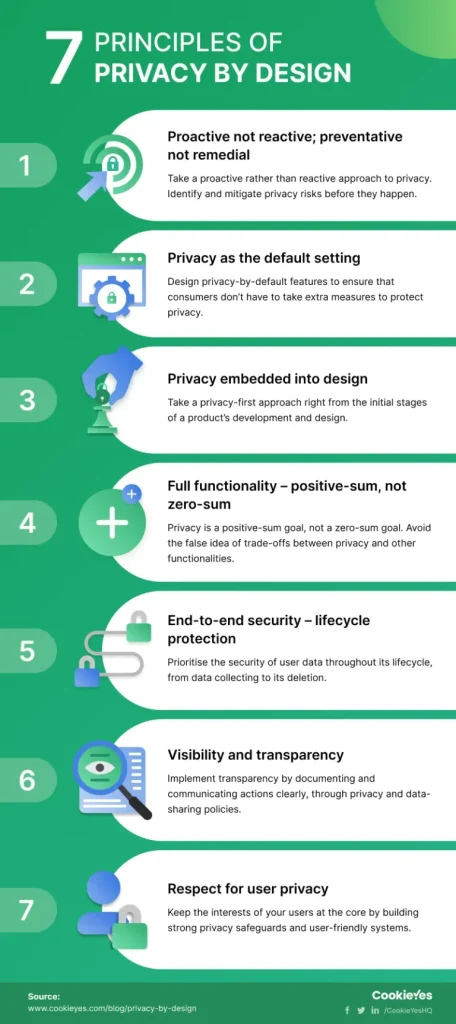Privacy by Design is more than a policy slogan; it is a practical, proactive approach to building technology that respects user rights from the very start. As digital services become deeply embedded in daily life and critical business operations, the way we handle personal information touches every layer of product strategy, software architecture, and engineering decisions. A privacy impact assessment helps anticipate risks. By weaving privacy into product development, teams can reduce risk and build more trustworthy experiences. When privacy is built in from the outset, it unlocks safer innovation and clearer data practices.
A privacy-centric design mindset treats personal data as a core constraint, guiding choices from architecture to user interfaces. Rather than an afterthought, data protection by design advocates for default privacy, modular architectures, and least-privilege data access. This approach emphasizes user rights protection, clear consent, and transparent data practices as standard features. Through thorough data flow mapping, minimization of data collection, and governance that pairs privacy with product goals, teams can sustain trust while innovating. In short, a privacy-first mindset reframes design decisions as opportunities to protect people and build resilient services.
Privacy by Design: Embedding Principles into Product Strategy and Privacy Engineering
Privacy by Design should be woven into every stage of product strategy and software architecture. By treating privacy as a core requirement—part of privacy engineering and grounded in privacy by design principles—teams can foresee data privacy risks and design controls before code is written. This proactive mindset reduces exposure to data breaches and regulatory friction, while preserving usability and business value.
When privacy is embedded from the outset, organizations can align product goals with user rights protection and clear data practices. The approach emphasizes default privacy settings, data minimization, end-to-end security, and transparent governance. By communicating data flows and purposes to users, teams build trust and enable responsible innovation without compromising regulatory compliance or data ethics.
Privacy Impact Assessments, Data Minimization, and User Rights Protection
Privacy Impact Assessments (privacy impact assessment) provide a structured lens to identify and mitigate privacy risks early in product development. Conducting a DPIA alongside data flow mapping helps reveal where sensitive data is collected, stored, or shared, aligning with data privacy goals and privacy by design principles. Such assessments support governance and accountability and help teams quantify residual risk before release.
Data minimization, informed consent, and robust retention policies are natural outcomes of embedding DPIAs into the lifecycle. By designing with least-privilege access and on-device processing where possible, organizations protect user rights protection and maintain functionality. Regular audits, transparent reporting, and ongoing privacy engineering efforts reinforce trust and help demonstrate compliance with regulations.
Frequently Asked Questions
What is Privacy by Design and how does it affect data privacy and privacy engineering in product development?
Privacy by Design is a proactive framework that embeds privacy into the design and operation of IT systems from the start, following privacy by design principles. It makes privacy the default, emphasizes data minimization, end-to-end security, and transparent governance. By integrating privacy engineering practices with product strategy, teams reduce the risk of data breaches and regulatory friction while strengthening user rights protection and trust. When privacy is designed in, data flows, storage, and processing are considered from inception, delivering safer, more transparent digital services.
What steps can organizations take to implement Privacy by Design principles to protect user rights?
To implement Privacy by Design principles and protect user rights, start with a data inventory and a privacy impact assessment (DPIA) to map data flows and risks. Then apply data minimization and use anonymization or pseudonymization where feasible. Design interfaces with default privacy, clear, granular consent, and easy revocation. Build security into the architecture with strong encryption and access controls. Use modular, privacy-aware data architectures that support easy deletion and auditable data lineage. Provide transparency through clear data practices and privacy dashboards, empowering users to exercise rights such as access, correction, or deletion. Finally, establish ongoing governance, training, and regular reviews of privacy controls as products evolve.
| Aspect | Key Points |
|---|---|
| Definition and Purpose | Privacy by Design is a proactive framework that weaves privacy into the design and operation of IT systems from the start, reducing risk and building user trust. |
| Core Concepts |
|
| Role of Data Privacy in User Rights |
Privacy by Design puts user rights at the forefront. In practice, this means giving individuals control over their data, enabling informed consent, and providing clear choices about how information is collected, used, and shared. When products are designed to respect user rights, they empower people to understand what information is collected, how it is used, who it is shared with, and how long it will be retained. For organizations, respecting user rights translates into stronger trust, better customer relationships, and a more resilient compliance posture. |
| Practical Ways to Implement Privacy by Design |
|
| Balancing Privacy with Innovation and Compliance |
A common concern is that privacy protections slow down product development or hinder innovation. However, Privacy by Design is not a barrier to progress; when done correctly, it can accelerate trust-based growth. By validating privacy early, teams reduce the risk of costly redesigns after launch. In regulated contexts, DPIAs and privacy-by-design practices can also simplify audits and demonstrate accountability. The goal is to create a culture where privacy is a competitive differentiator and a source of operational resilience. |
Summary
Privacy by Design is a practical blueprint for building technology that respects user rights. By embedding privacy into product design, organizations can balance powerful, user-centric experiences with responsible data stewardship. This approach reduces risk, builds trust, and enables sustainable innovation. It requires ongoing data inventories, DPIAs, data minimization, default privacy, robust security, and transparent governance. Embracing Privacy by Design aligns ethics, compliance, and business strategy in a data-driven world.



